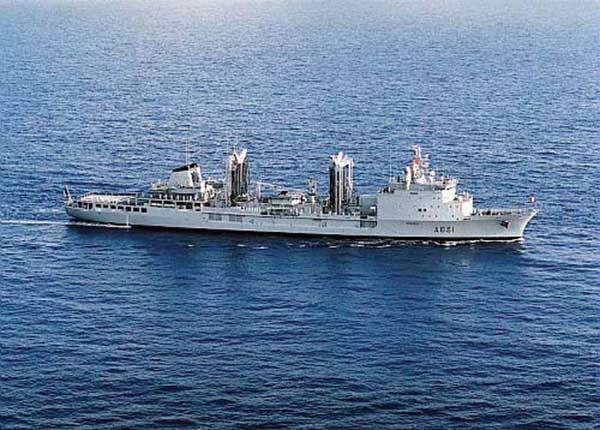
The Indian Ocean in 2019 emerges as yet another arena of ‘Great Power Games’ in which intersect powerful maritime ambitions of China on one hand and India and the Western Powers on the other hand. Implicit in ‘China Maritime Strategy 2015’ document articulating China’s global naval ambition is the centrality of Indian Ocean in China’s naval strategy.
China has imposed formidable imperatives in 2019 on the Indian Navy in terms of its calibrated intentions increasing intrusiveness in Indian Ocean and thereby challenging the Indian Navy’s stretched dominance of the Indian Ocean, hitherto fore not contended by other naval powers. The Indian Ocean so far was frequented by Naval Fleets of Major Powers friendly to India.
China is certainly not a Major Power friendly to India and its increasing naval presence in Indian Ocean should be an over-riding strategic concern for India’s security decision-makers.
Strategically, the moves of Chinese Navy into Indian Ocean in increasing strengths including nuclear armed submarines is not for showing its flag but underlying motives suggest creation of new strategic pressure points against India. Needless to state that unlike Navies of friendly Major Powers in the Indian Ocean, India would be unwise to read China’s motives otherwise as China and India are decidedly in an adversarial postures and contending Powers in Indo Pacific Asia.
Besides coping with the China Threat presently in-the making in the Indian Ocean, the Indian Navy also has to add shape and muscle to India’s aspirational national goals of emerging as a Major Global Power. The Indian Navy also has to add effect to India’s “Act East” policy which entails sustaining a naval presence in the Western Pacific besides creating counter-pressure points against China.
All of the above roles which Indian Navy is expected to perform generate formidable imperatives in 2019 for fast-track substantial expansion of the Indian Navy
India’s notable deep peninsular configuration in the Indian Ocean endows significant strategic advantages on India’s dominance of the Indian Ocean in terms of projection of naval power in the Bay of Bengal, Arabian Sea and if Indian Navy’s naval combatants complement build-up is fast tracked the outermost Southern reaches of the Indian Ocean.
The Indian Navy’s dominance of the Indian Ocean in credible effective naval terms would require at least three Aircraft Carrier Groups with attendant complement of submarines and destroyers besides logistic ships. The Indian Navy needs to be built up to a 200 ship Navy by 2030 and to a 300 ship Navy by 2050 as against about 120 ship Navy currently in size.
The Indian Navy in view of China’s naval challenge to India’s existing dominance of Indian Ocean requires a fair number of Aircraft Carriers for sea control of the Indian Ocean and a minimum doubling of its submarines including nuclear submarines for deterrence and denial.
Indian Navy therefore has formidable imperatives to build and fast-track its expansion for India’s ‘One Pint Naval Agenda’ and that is to ensure that the Indian Ocean continues to remain as ‘India’s Ocean’ credibly and effectively.
The China Threat in the Indian Ocean and its implications need to be explained in a little more detail. China’s increasing intrusiveness in the Indian Ocean is being explained away simply in terms of China’s concerns to ensure the security of its energy sea-lanes from the Gulf to China.
China’s intrusiveness in Indian Ocean is also being explained in terms of its aspirational ambitions to emerge as a Superpower for which an essential pre-requisite and as explained in its ‘China Maritime Strategy Document 2015’ as developing capabilities to project naval power in distant seas.
Putting both of the above aside for whatever their worth are the strategic implications that arise for India of a sizeable Chinese Navy presence in the Indian Ocean for which China has sequentially working for year with its ‘String of Pearls’ strategy and visible starkly in 2019 of capacity building of Pakistan Navy and the potential of Gwadur Port as Chinese Navy base in close proximity to the critical Hormuz Straits, the chokepoint through which global energy supplies have to traverse. Pakistan is being developed as China’s proxy naval power in the North Arabian Sea to bottle-up Indian Navy’s Western Command.
Elucidated in my Book’ China-India Military Confrontation:21st Century Perspectives’ , Chapter 7-‘The Maritime Dimensions of China-India Military Confrontation in 21st Century’ were some notable points highlighting China’s intentions towards its Indian Ocean Strategy underway.
“China’s strategic intentions in effecting a substantial Chinese Navy presence in the Indian Ocean need to be deciphered in the overall context of the China- India military confrontation. China is well aware that the land borders separating Indian and Chinese military deployments in China Occupied Tibet, the growing Indian diminution of its military asymmetries with China is gradually reducing. China thus robbed of her overwhelming military dominance on the land borders. China has therefore been forced to prise open another front, and this time at the Southern extremities of India, namely the Indian Ocean. Ostensibly, for security of Chinese vital energy lifelines traversing the Indian Ocean, but far more strategic intent, as adding the maritime dimension to the festering China-India military confrontation in the High H Himalayas.” So read one of the paragraphs.
Also reflected was the fact that this Southern Front in the China-India military confrontation is a front where India prevails unlike the Himalayan Northern Front. Obviously China can ill afford to let India prevail on the maritime Southern Front through which traverse China’s energy lifelines.
To those dismissive of the above, it needs to be pointed out that presence of foreign Navies in the Indian Ocean has been there for ages but these did not receive serious strategic concerns in India. Why Chinese Navy intrusive naval presence in Indian Ocean has raised alarm is that China and India are in adversarial modes in their tense relations of boundary disputes and history of China’s armed aggression against India in 1962.
Does it need to be pointed out that Indian Navy while strong in naval doctrines and geopolitical environment favouring India added to its geostrategic peninsular configuration is in 2019 is woefully short of the required complement of naval combatant ships required for credible dominance of the Indian Ocean.
China has a great asymmetrical advantage here in that in the major part of the last two decades Chinese Navy went in for exponential expansion of its naval assets due to United States obliviousness due to its distractions in Iraq and Afghanistan. Comparatively, in the same period, especially the period 2004-14 India’s war preparedness under the previous Congress political dispensation was seriously neglected.
Formidable imperatives therefore exist contextually for the Indian Navy to retain its continued dominance of the Indian Ocean. This would have ordinarily ben a graduated incremental exercise if not for the pronounced China Threat and the concretisation of the China-Pakistan Axis. The Indian Navy therefore requires sustained and fast-tracked expansion of its naval assets.
Fortunately for India, there exists a marked convergence of strategic interests in the security and stability of the Indian Ocean of Major Powers excepting China. To that end any fast-track buildup of the Indian Navy would not ring alarm bells in global capitals as India’s rise as a Major Power is perceived as “benign” in comparison to China’s aggressive maritime record as demonstrated in the South China Sea.
The Major Powers with strategic convergences with India over Indian Ocean security would be more than willing to invest in capacity-building of Indian Navy besides India’s own indigenous efforts. Further, this convergence has led to increased rotationary presence of Major Power Navies in Indian Ocean and increasing multilateral naval exercises with the Indian Navy. This provides existential friendly naval power in Indian Ocean to India’s benefit.
However, this given benefit should not distract Indian Navy from its long-term perspectives of developing India’s naval power to levels suggested above and that too in a compressed time-frame so as Indian Navy’s differentials with Chinese Navy are not widened by incremental buildup on pleas of shortage of financial resources. India has to find financial resources come what may. India’s politically populist so-called social welfare schemes, but financially wasteful in crores of rupees, put into effect by previous Governments need liquidation and resources so saved be diverted to Indian Navy buildup.
Concluding, it needs to be stressed that the China Threat evolving in the naval dimensions in the Indian Ocean cannot be ignored and India cannot be dismissive of this Threat on the plea that it would take China a long time to pose a credible threat to Indian Navy’s dominance of the Indian Ocean. It may take a long time for China to do so but it needs to be pointed out that equally it would take India a long time to create Indian Navy combatant assets to levels credible to meet increasing challenges to Indian Navy’s dominance of Indian Ocean.




